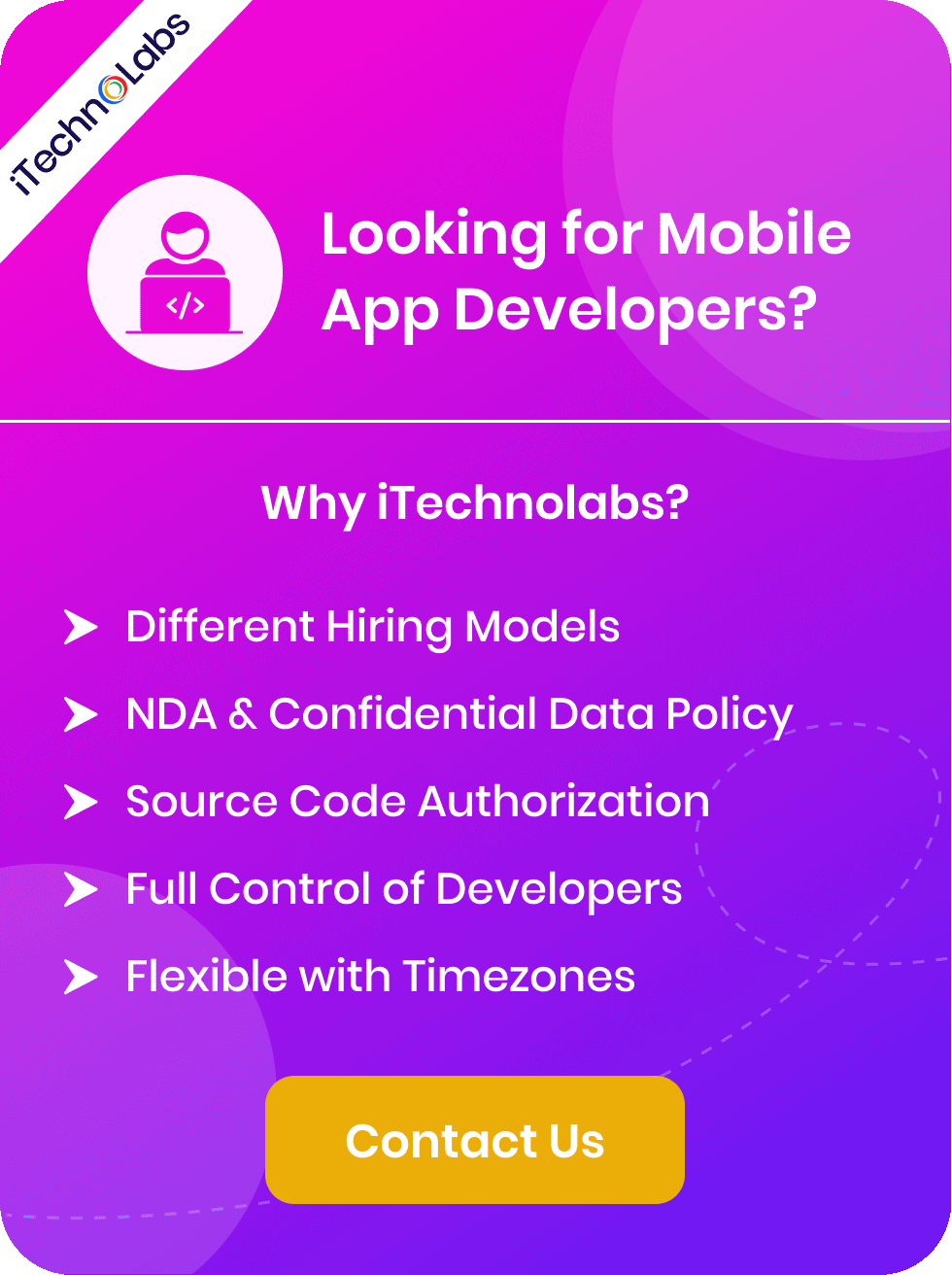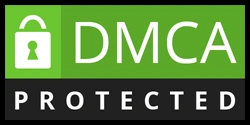School management software development is a complex and multi-faceted process that involves various stages and aspects. From designing the user interface to implementing advanced features, there are many expenses associated with school management software development. This includes costs for initial planning, software design, coding, testing, and deployment. Additionally, the integration of various modules such as attendance tracking, grade management, and communication tools adds layers of complexity and expense.
Furthermore, ongoing maintenance, updates, and customer support also contribute significantly to the overall expenses. Maintenance ensures that the software continues to function smoothly and efficiently, while updates are necessary to keep the software aligned with new educational standards and technological advancements. Customer support is crucial to address any issues or questions that users may have, ensuring a positive user experience.
In this section, we will discuss the different types of expenses involved in developing school management software. We will delve into the costs associated with hiring skilled developers who have the expertise to create a user-friendly and robust system. This includes not only software engineers but also UI/UX designers, project managers, and quality assurance testers. Purchasing necessary tools and software, such as development frameworks, libraries, and testing tools, is another major expense.
The time investment required to create a robust and efficient system cannot be overlooked. Detailed planning and iterative development cycles are essential to ensure that the software meets the needs of its users. Additionally, we will explore the importance of investing in user training and support to ensure that the software is effectively utilized by the end-users. Proper training programs can help users become proficient with the software, reducing the likelihood of errors and increasing overall satisfaction.
What is School Management Software?
School management software is a comprehensive system designed to streamline and automate various administrative tasks in educational institutions. It serves as a one-stop solution for managing student records, academic schedules, financial reports, and communication between teachers, students, parents, and administrators.
The benefits of using school management software are numerous – it streamlines processes, reduces paperwork, improves efficiency and productivity, enhances communication and collaboration among stakeholders, and provides real-time data analysis for informed decision-making. Additionally, with the increasing adoption of technology in education, school management software has become an essential tool for modern schools.
Market Stats of School Management Software
- The global market for school management software was valued at approximately $2.4 billion in 2020.
- The market is projected to grow at a compound annual growth rate (CAGR) of 16.3% from 2021 to 2028.
- North America holds the largest share of the market, accounting for 38% of the global revenue.
- The Asia-Pacific region is anticipated to witness the fastest growth during the forecast period, driven by the increasing adoption of digital education solutions.
- Cloud-based school management software solutions are expected to dominate the market, with a projected market share of 65% by 2025.
- Schools with more than 1,000 students represent the largest segment of users, contributing to over 45% of the market demand.
- The enhanced performance and participation in extracurricular activities.
Also Read: 40+ Unique Website Ideas for College Students, Beginners and Startups
Benefits of Student Management Software Development
Student management software development is a continuously evolving process that aims to provide schools with customized and efficient solutions for managing student data, academic performance, and communication. Some of the key benefits of using student management software are:
1. Savings on Time and Costs
Student management software automates various administrative tasks such as attendance tracking, report card generation, and fee management. This not only saves time for the school staff by streamlining repetitive processes but also reduces the need for manual data entry, resulting in significant cost savings. Additionally, the software often includes features for parent-teacher communication, class scheduling, and performance analytics, further enhancing the efficiency and effectiveness of school operations. With centralized data management and easy access to important information, schools can focus more on providing quality education and less on administrative burdens.
2. Provides Accurate Students Data Reporting
With traditional methods of data management, there is always a risk of human error, such as misplacing records or making mistakes in data entry. Student management software eliminates this risk by providing accurate and up-to-date student information that can be accessed instantly. These systems keep track of attendance records, academic performance, and other important data points, such as disciplinary records and extracurricular activities, making it easy for teachers and school administrators to generate comprehensive reports as needed. This ensures transparency and accountability in the education system, allowing educators to make informed decisions that can significantly enhance the learning experience for students. Furthermore, parents can also benefit from these systems by staying informed about their child’s progress and school activities, fostering a collaborative environment between the school and families.
3. Streamlines Fee Management
One of the biggest administrative tasks for schools is managing fees and payments. With student management software, this process becomes much more streamlined and efficient. Parents can make online payments through secure payment gateways, reducing the burden on school staff to manually track and manage fee collections. The system can also generate electronic receipts and keep track of payment history, making it easier to maintain accurate financial records. This not only saves time for school administrators but also provides a convenient option for parents who no longer have to physically go to the school to pay fees or worry about losing paper receipts.
How Much Does School Management Software Development Cost?
The cost of developing school management software can vary significantly based on several factors, including the complexity of features, the development team’s location, and the technology stack used. On average, the development of a comprehensive school management system typically ranges from $30,000 to $100,000. For a basic system with essential features like attendance tracking, grade management, and fee processing, costs might be on the lower end, around $30,000 to $50,000. However, if your institution requires advanced functionalities such as detailed analytics, mobile app integration, personalized dashboards, and robust security measures, the development cost can escalate to between $70,000 and $100,000 or even higher. Additionally, ongoing maintenance and updates can add to the overall expenses. It’s essential to consider these factors and possibly consult with multiple software development firms to get detailed quotes tailored to your specific needs.
Factors Affecting School Management Software Development Cost
When it comes to developing school management software, several factors can influence the final cost. Understanding these elements can help you make informed decisions when discussing project requirements with a development team. Here are some of the most significant factors that affect the cost of school management software development:
1. Feature Set and Customization
The scope of your project and the features you require will have a significant impact on the overall cost. A basic school management software with standard features like attendance tracking, fee processing, and grade management will be less expensive than a fully customized system with advanced functionalities such as student performance analytics, parent-teacher communication tools, and personalized dashboards. It’s essential to prioritize the features that are most critical for your institution to ensure you get the best value for your budget.
2. Platform and Technology
The platform and technology stack chosen for the development of your school management software can have a significant impact on the cost. Native app development for iOS or Android will be more expensive than developing a web-based solution. Similarly, choosing open-source technologies over proprietary ones can also help reduce costs without compromising on quality. However, it’s crucial to consider long-term maintenance and scalability when making these decisions.
3. Design UI/UX
The user interface (UI) and user experience (UX) of your school management software are crucial for its success. The design process involves creating wireframes, mockups, and prototypes to provide a visual representation of the final product. The complexity of the UI/UX design can impact development costs, but it’s worth investing in creating an intuitive and visually appealing interface that will enhance user satisfaction and adoption.
4. Integration With Existing Systems
If your institution already has existing systems in place, such as a student information system or accounting software, it’s essential to consider the integration of these systems with your new school management software. The cost of integration will depend on the complexity and compatibility of the systems, so it’s crucial to involve all relevant stakeholders in the decision-making process. This involves IT staff, administrators, and possibly even teachers who will be using the software daily. Ensuring seamless integration can prevent data disruptions and improve overall efficiency. Furthermore, it’s important to assess the training requirements for staff to effectively use the integrated systems, as this can also impact the overall cost and timeline of the project. Proper planning and communication among all parties can ensure a smoother transition to the new software.
5. Scalability and Performance
As your institution grows, so will the demands on your school management software. It’s essential to consider the scalability of the software and its ability to handle larger volumes of data and users in the future. This may involve investing in additional hardware or upgrading hosting services as needed. Performance testing should also be conducted to ensure that the software can handle peak usage times and continue to operate efficiently without any significant delays or crashes. In addition, regular maintenance and updates are necessary to keep the software running smoothly and minimize any potential system failures.
6. Data Security and Compliance
Protecting sensitive student data is a top priority for any educational institution. When choosing a school management software, it’s crucial to ensure that it has robust security features in place to safeguard against potential cyber threats and data breaches. This may include encryption of data, secure user authentication processes, and regular backups of all information. It’s also essential to consider compliance with relevant regulations such as the Family Educational Rights and Privacy Act (FERPA) or the General Data Protection Regulation (GDPR). Choosing a software provider who is transparent about their security measures and compliant with industry standards can give you peace of mind when it comes to protecting your students’ information.
7. Ongoing Maintenance and Support
Implementing school management software is not a one-time process. It requires ongoing maintenance and support to ensure its effectiveness and efficiency in meeting the institution’s needs. This includes regular updates, bug fixes, and technical support to troubleshoot any issues that may arise. When selecting a software provider, it’s essential to inquire about their maintenance and support services and what level of assistance they offer to their clients. 24/7 customer service or dedicated account managers can be beneficial in addressing any concerns or questions quickly.
Suggested: How Much Does it Cost to Create An App
Top 5 School Management Software
Based on the above criteria, here are the top five school management software options to consider:
1. Gradelink
Gradelink is a cloud-based school management software that offers features such as student information management, online gradebooks, attendance tracking, and parent communication tools. It also has robust security measures in place to protect sensitive data and provides 24/7 technical support.
2. MyClassCampus
MyClassCampus is a comprehensive school management software that includes a wide range of modules to streamline administrative tasks. These modules cover admissions, attendance tracking, grade books, and finance management, ensuring that every aspect of school operations is efficiently handled. Additionally, MyClassCampus offers a user-friendly mobile app, which provides easy access and facilitates seamless communication between teachers, students, and parents. This ensures that everyone stays informed and connected, enhancing the overall educational experience.
3. Alma
Alma is a flexible and customizable school management software that caters to the unique needs of different types of institutions. Its broad range of features includes student data management, lesson planning, and an online parent portal for easy communication. Alma also offers dedicated customer support and regularly updates its software based on user feedback.
4. Rediker
Rediker is a comprehensive school management software designed to streamline various administrative tasks and enhance communication within educational institutions. It offers a wide range of features, including student information management, admissions processing, and class scheduling, ensuring that all essential data is organized and accessible.
In addition, Rediker includes a robust teacher gradebook, allowing educators to efficiently track and manage student performance. The software also features a parent portal, giving parents real-time access to their children’s academic progress, attendance records, and school announcements. Communication tools are integrated within the platform to keep everyone informed and connected, facilitating seamless interaction between teachers, students, and parents.
Furthermore, Rediker provides extensive training and support to ensure smooth implementation and effective ongoing use of the software. This comprehensive approach helps schools maximize the benefits of the system, improving overall efficiency and fostering a more collaborative educational environment.
5. Schoolbic
Schoolbic is a cloud-based school management software that caters to the needs of both K-12 institutions and higher education systems. With its intuitive user interface, it offers a comprehensive suite of features to help manage various aspects of school operations, including admissions, attendance tracking, timetables, and fee collection.
One unique feature of Schoolbic is its integrated learning management system (LMS), which enables teachers to create and deliver online courses and assignments. This helps schools adapt to modern teaching methods and facilitate distance learning when necessary.
Key Features of School Management Software Development
1. Admission Solution Enhanced
Managing the admission process can be a tedious and time-consuming task for schools. School management software streamlines this process by automating application submissions, document verification, fee collection, and enrollment. This saves both time and effort for school administrators while providing a hassle-free experience for parents.
2. Ensure Proper Academic Conduct
School management software offers various features to ensure proper academic conduct, such as attendance tracking, grade books, and online assignment submissions. This helps teachers monitor student progress and identify areas for improvement, while also promoting accountability among students.
3. Attendance Management System
Tracking attendance manually can be a daunting task for teachers, often leading to errors and inaccuracies. This process can be time-consuming and distract teachers from their primary responsibilities of educating and supporting students. School management software offers a solution with an automated attendance management system that records student presence in real time, ensuring accuracy and reducing administrative burden. Additionally, it generates detailed reports for parents and school administrators, providing valuable insights into student attendance patterns and enabling timely interventions when necessary. This technology not only streamlines the administrative process but also enhances communication and transparency between the school and families.
4. In-house Communication
Effective communication is critical for the success of any educational institution. School management software provides a centralized platform for in-house communication, allowing teachers, school staff, and parents to easily communicate and stay updated on important information such as upcoming events, school announcements, and student progress. This technology facilitates the sharing of schedules, deadlines, and policy changes, enabling everyone involved to remain informed and engaged. It also includes features like instant messaging, email alerts, and dashboards that provide a real-time overview of school activities. This not only promotes transparency but also saves time by eliminating the need for multiple modes of communication, thereby improving efficiency and ensuring that no critical information is missed. Additionally, such software can offer analytics and reporting tools that help school administrators monitor the effectiveness of their communication strategies, making continuous improvements possible.
5. Integration of SMS and Email
One of the key features of school management software is its ability to integrate with SMS and email. This feature enables schools to send automated text messages and emails to parents, students, and staff regarding important updates, reminders, or emergencies. For instance, in case of a school closure due to inclement weather, the system can automatically send an alert to all parents via text message or email, ensuring that everyone is promptly informed. Additionally, the software can be used to send reminders about upcoming events such as parent-teacher conferences, field trips, or exam schedules. This not only ensures timely communication but also eliminates the need for manual messaging, saving valuable time for both teachers and administrators. Furthermore, having a centralized communication system helps maintain consistency and accuracy in the information being disseminated, reducing the chances of miscommunication. Schools can also track the delivery and receipt of messages, ensuring that critical information reaches its intended recipients.
How can iTechnolabs help you build School Management Software?
iTechnolabs is a trusted software development company with experience in building customized school management software solutions. Our team of experts understands the unique requirements and challenges of schools and has the technical expertise to develop a robust, user-friendly, and secure software solution that meets your specific needs. We follow an agile approach, ensuring timely delivery of the project while providing regular updates and incorporating feedback from our clients. With our school management software, you can streamline various administrative tasks such as student enrollment, attendance tracking, fee collection, timetable scheduling, and more. Additionally, we offer seamless integration with other systems like SMS and email for efficient communication with students, parents, and staff. Moreover, our software is scalable, allowing for future updates and enhancements as your school grows.
- Customized Solutions: Our tailored software is designed to meet the specific needs and challenges of your school, ensuring that every aspect of your institution is efficiently managed.
- Agile Development: Our agile development process guarantees timely project delivery with regular updates and the integration of client feedback, ensuring that the final product meets your expectations.
- Streamlined Administrative Tasks: Our software simplifies essential administrative tasks such as student enrollment, attendance tracking, fee collection, timetable scheduling, and more, freeing up time for educators to focus on teaching.
- Efficient Communication: With integration to SMS and email systems, our software enables seamless communication with students, parents, and staff, ensuring that everyone stays informed and connected.
- User-Friendly Interface: The intuitive design of our software makes it easy to use for administrators, teachers, students, and parents alike, minimizing the learning curve and maximizing efficiency.
- Scalable Software: Our flexible software architecture allows for future upgrades and enhancements as your school grows, ensuring that the system evolves with your needs.
- Robust Security: We implement strong security measures to protect sensitive school and student data, providing peace of mind that your information is safe and secure.
- Experienced Team: Our skilled team of developers has extensive experience in creating school management software, bringing a wealth of knowledge and expertise to your project.
- Cost-Effective: Our solutions are designed to be budget-friendly, ensuring that you receive high-quality, functional software without compromising on cost, and making it accessible for schools of all sizes.
Read More: Explore the List of Top Different Types of Educational Software
Are you looking for a reputable software development company?
Contact us!
Choosing iTechnolabs for your school management software development brings a host of advantages that set us apart from the competition. Our commitment to excellence and customer satisfaction ensures that you receive a state-of-the-art solution tailored to your specific needs. Here are some key benefits of partnering with iTechnolabs:
- Customization and Flexibility: We understand that each school has unique requirements, and our team provides bespoke software solutions that can be tailored to meet your specific needs. Our flexible architecture ensures that the system can grow and evolve with your institution.
- Expertise and Experience: With years of experience in the education sector, our developers possess in-depth knowledge of the challenges and needs of school management. This expertise translates into software that is not only functional but also intuitive and user-friendly.
- Cost-Effectiveness: We offer budget-friendly solutions without compromising on quality. Our competitive pricing ensures that even small and mid-sized schools can afford top-notch management software.
- Reliability and Support: iTechnolabs is dedicated to providing reliable and robust software that can handle the demands of day-to-day school operations. Additionally, we offer ongoing support and maintenance to ensure your system remains up-to-date and runs smoothly.
- Integration Capabilities: Our software can seamlessly integrate with existing systems and third-party applications, ensuring smooth operation across all platforms and minimizing disruptions during implementation.
- Comprehensive Training and Documentation: We provide thorough training for your staff to ensure they can maximize the benefits of our software. Detailed documentation and user manuals further support this training, making the transition as seamless as possible.
- Cutting-Edge Technology: At iTechnolabs, we utilize the latest technologies and development practices to build software that is both powerful and easy to use. This ensures that your school benefits from innovative features and optimal performance.
Conclusion:
iTechnolabs is the go-to destination for schools looking for reliable, cost-effective, and intuitive school management software. Our team’s experience and expertise, coupled with our commitment to customer satisfaction, make us a trusted partner for schools of all sizes. With our comprehensive solutions and ongoing support, we strive to empower schools to focus on their core mission of providing quality education while leaving the administrative tasks to us. Contact us today to learn more about how iTechnolabs can transform your school’s operations with our state-of-the-art software. Together, let’s build a better future for education through technology.
FAQ
1. How to Develop School Management Software?
Developing school management software requires a combination of technical expertise and knowledge of the education industry. Here are the general steps involved in developing such software:
- Understand the needs and challenges of the education industry: Before starting to develop the software, it is crucial to understand the specific needs and pain points of schools and educational institutions.
- Define key features and functionalities: Based on your understanding of the industry, define a list of essential features that your software should offer. This could include student information management, attendance tracking, gradebook management, etc.
- Choose the right technology stack: Select appropriate programming languages, frameworks, and tools for the development process.
- Design a user-friendly interface: One of the critical factors that determine the success of school management software is its ease of use. Make sure to design an intuitive and user-friendly interface for your software.
- Develop and test the software: Once you have finalized the design, start developing the software using agile methodology, which involves continuous testing and improvement.
2. How Much Time Does School Management Software Development Take?
The time required for developing school management software can vary depending on various factors, such as the features and functionalities included, the complexity of the design, the technology stack used, and the expertise of the development team. For instance, including modules for attendance tracking, grade management, communication tools, and scheduling can add to the development time. Additionally, the design’s complexity, such as ensuring a user-friendly interface and seamless user experience, plays a significant role. On average, it can take anywhere from 6 to 12 months to develop a comprehensive software solution. This timeline includes stages like planning, design, development, testing, and deployment, each of which is crucial to delivering a robust and effective system.
3. How to Reduce School Management Software Development Costs?
School management software development can be a significant investment for educational institutions, and it is essential to find ways to reduce the cost without compromising on quality. Here are some tips to help you lower the development costs:
- Prioritize features: Identify and prioritize the essential features that your school management software needs. This will help you avoid unnecessary functionalities that can add to the development time and cost.
- Choose an open-source platform: Consider using an open-source platform for developing your software instead of building everything from scratch. Open-source platforms provide a cost-effective alternative as they are free to use and have a large community for support.
4. What Are the Benefits of Creating School Management Software?
Developing school management software can bring numerous benefits to educational institutions such as:
- Streamlined processes: A comprehensive school management software can automate various administrative tasks, saving time and effort for teachers and staff.
- Improved communication: With features like messaging and parental portals, school management software can facilitate easy communication between parents, students, and teachers.
- Enhanced data management: School management software allows for centralized storage of data, making it easier to access and manage information.
- Increased efficiency: By automating tasks like attendance tracking and grade management, school management software can improve overall efficiency in the school.
- Personalized learning experience: School management software can provide personalized learning experiences for students by tracking their progress and tailoring lessons accordingly.






